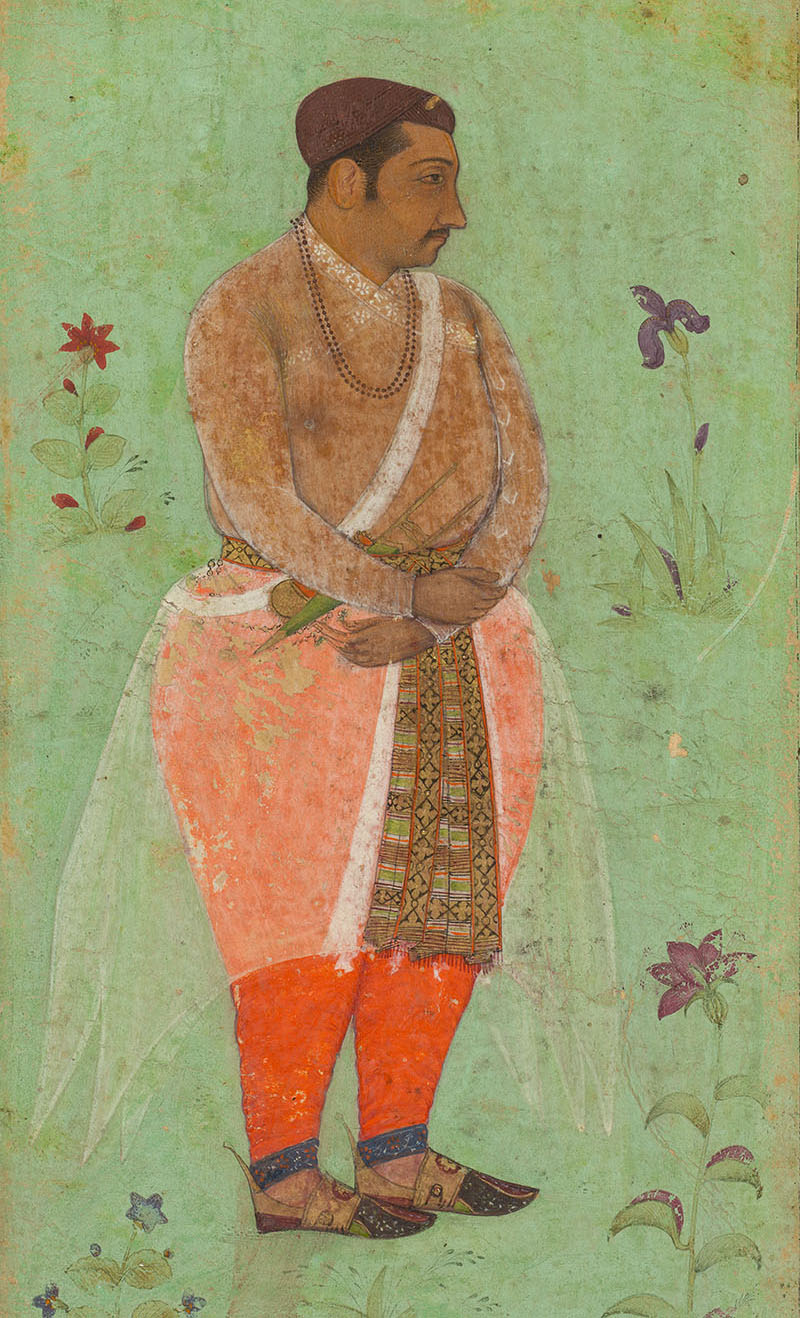A seventeenth-century artist of the Mughal painting school, Bishandas was well-known for his naturalistic portraits. Painting in the court of Mughal emperor Jahangir, Bishandas was the nephew of Nanha, another painter active in the courts of Akbar and Jahangir. He was also one of the court artists working for Jahangir before his reign in Allahabad as well as during his reign in Agra.
Bishandas’ most significant commission was when he was sent to Persia (now Iran and Iraq) – where he remained from 1613 to 1620 – to paint portraits of the Shah Abbas I and the chief members of his court. After his trip to Persia, emperor Jahangir showed the portraits to the Persian courtiers who judged them for authenticity. Impressed by Bishandas’ work, Jahangir gifted him an elephant, which was considered a magnanimous reward at the time. Other significant works by Bishandas include The Birth of Prince (1610–15), a part of Jahangirnama (Book of Jahangir) as well as the Shahnama (Book of Kings) and a book of fables called Anwar-e Suhayl (The Lights of Canopus).







